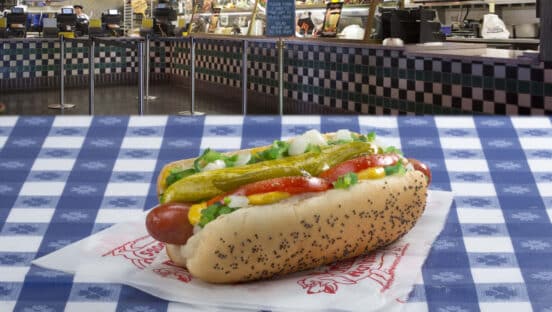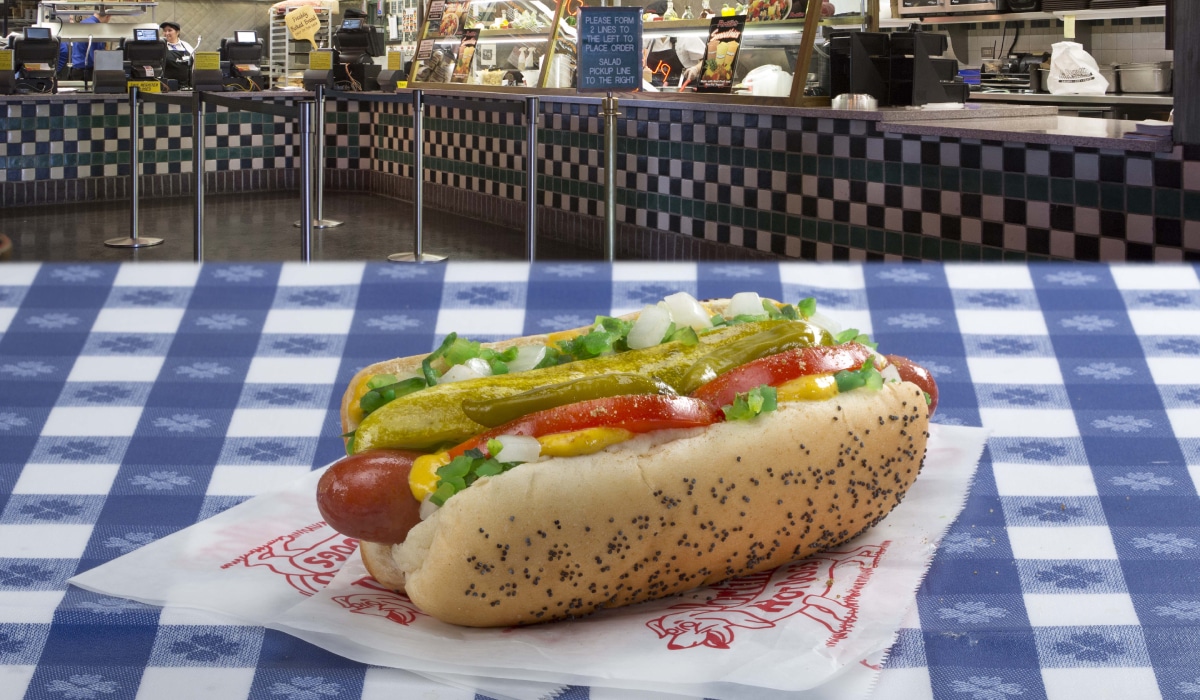Portillo’s is a Chicago brand, born and raised, and CEO Michael Osanloo is proud of that fact. But as a brand leader, his mind is focused on where the next piece of growth lies within the U.S.
That would be the Sun Belt, a region with warmer climates and typically lower taxes. According to U.S. Census data, the top 10 counties with the most numeric growth from 2021 to 2022 were all from Arizona, Texas, or Florida. The top three were Maricopa County (Phoenix), Harris County (Houston), and Collin County (Dallas-Fort Worth). So it shouldn’t be a surprise Portillo’s is investing most of its development funds. Eighty percent of the chain’s future growth will come from these three states. Beyond the next few years, the real estate team is also plotting moves in Las Vegas, Denver, and Atlanta.
Before 2023, Portillo’s didn’t have a presence in Texas. Now, there are four across the Dallas-Fort Worth market. The first one debuted in January 2023 in The Colony, a suburb home to Grandscape—a massive mixed-use development holding several restaurants, businesses, apartments, and entertainment venues. Portillo’s placed a restaurant there, and it earned $13 million in its first year. For reference, stores outside of the Chicago market usually earn $6–7 million in AUV.
“I’ve been personally blown away by the response of Texans to our food,” Osanloo says. “Texas is very hard to compete in. There have been other great chains that have not done well in Texas. But the reception so far for us has been extraordinary. And so, I’m thrilled. I’m probably more bullish about our concept than I’ve ever been.”
” … People say, ‘So why do you think Chicago-style food is working so well?’ And it’s funny because people say, ‘Why is Italian beef such a hit?’ It’s a roast beef sandwich, right? It’s a delicious roast beef sandwich with a delicious crusty bread. It’s really good. And gosh, shockingly, Texans like beef and bread,” he added.
Portillo’s opened 12 restaurants in 2023, pushing its unit count to 84. The chain debuted more locations last year than it did from 2019–2022.
Four of those were holdovers from the class of 2022 because of permitting and construction delays. The goal this year is to debut nine stores and keep a pace of 10-plus percent annual growth in the near term. These upcoming restaurants will come in Dallas, Arizona, Houston, Central Florida, and the Midwest. The opening cadence will be split 50/50 between the first and back half of 2024.
Looking further into the future, Portillo’s announced last year it has room for 920 U.S. restaurants at minimum and long-term annual growth of 12–15 percent. That’s a big jump from its previous projection of 600. Of that estimate, 120 locations would be drive-thru-only units and urban-based walk-up locations. However, Osanloo says those urban prototypes are “way down the road right now.” The current objective is to “collect all the low-hanging fruit before we start to do anything.”
Although not urban in-line yet, the brand has started branching out in terms of portfolio diversity. Portillo’s opened its first drive-thru-only restaurant in Joliet, Illinois, in early 2022. It features three drive-thru lanes as well as a pick-up area for orders placed on the web and mobile app. While Portillo’s is enjoying success at the store, the leadership team admits that the building is bigger than it needed to be. The company took those learnings and implemented them at the second iteration in Rosemont, Illinois, which opened in mid-December. But now, Osanloo sees a lot more customers walking up to order at the drive-thru-only location than anticipated. So that will be a bigger emphasis in the next edition.
“Keep tweaking it. You keep tweaking it until you get it perfect,” Osanloo says. “You never quite get it perfect because the minute you think it’s perfect, something else changes.”
Similar adjustments are being made systemwide. The average build-out cost for the class of 2022 was around $7 million. In 2023, it ran Portillo’s about $6.2 million to $6.5 million. For the past year and a half, the chain has worked on what it calls the “Restaurant of the Future,” which should cut $1 million off development expenses. The first one will begin construction in Q4.
A traditional Portillo’s in Chicagoland is 10,000 square feet and has a 100-foot linear kitchen line. Employees hate it and so do investors because they’re watching cash burn as team members walk back and forth to complete orders, Osanloo says.
In today’s time, restaurants being built are 7,800 square feet with a 67-foot kitchen line. The Restaurant of the Future will shrink to 6,000 square feet and a 45-foot kitchen line. It’s as simple as placing freezers near the air fryer station so workers don’t have to walk 20 steps to grab the next batch of fries. There’s also a new broiler system that requires less movement.
“That’s been the most impressive thing. We’ve gone from these huge kitchens to smaller kitchens without giving up the ability to generate revenue,” Osanloo says. “You can always make a smaller restaurant and then not do as well in the top line. Our goal has been to create a smaller kitchen that can still do $10-plus million in revenue.”
The company’s same-store sales increased 6.1 percent in Q3 and total revenue lifted 11.8 percent to $643 million. Restaurant-level adjusted EBITDA was $151 million and the margin was 23.6 percent. Traffic picked up in the quarter, enough for Osanloo to be satisfied. He remains enthusiastic about consumer health despite reports of macro-economic concerns across the country.
One of Portillo’s many claims to fame is that it’s never closed a store in its 60 years. Osanloo certainly doesn’t want to be the first CEO to watch that happen. To him, it all comes down to making the right real estate decisions, especially in an inflationary environment. Portillo’s has the ability to weigh each one carefully because of its conservative development pace.
“We’re not building 40–50 restaurants. We’re targeting nine-plus,” Osanloo says. “And so when you’re building nine, you can make sure that you’re building the right nine and you’re doing a good job.”








